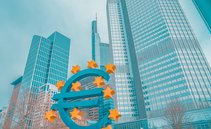The Federal Reserve kept interest rates stable once again, though Powell dismissed any stagflation fear.

The US Federal Reserve kept interest rates stable at a 20-year high during its May 1st meeting. Though inflation is not decreasing as expected, Fed Chairman Jerome Powell expressed a positive view for the future, saying he does not see any risk of stagflation.
Stagflation is a condition where the economy stagnates or falls into a recession while inflation remains high. Stagflation is usually a nightmare for central bankers because they cannot control the monetary policy to fight off both threats. If interest rates rise, tightening the monetary supply, inflation falls but the economy slows and vice versa.
Fears for stagflation emerged recently as the US economy grew at a slower pace than expected in Q1 2024. The American GDP expanded by 1.6% in the January-March period, lower than the 2.4% expected.
Meanwhile, inflation remains stubbornly high even after years of tightening policy. March’s inflation grew to 3.5% year-on-year, more than the 3.4% expected. Consumer prices hovered around the 3% mark for months, without a stable path to the 2% target.
That is despite interest rates being at 5.5%, the highest level in 20 years. At the beginning of the year, markets hoped for three rate cuts in 2024, but stickier-than-expected inflation will likely prevent it.
Stagflation dismissal
After maintaining interest rates stable, Fed Chairman Jerome Powell reassured markets the situation will soon improve. He also dismissed any talks of stagflation risks in the US economy.
“I was around for stagflation, and it was 10% unemployment, it was high-single-digit inflation. And very slow growth,” Powell said. “Right now, we have 3% growth which is pretty solid growth, I would say, by any measure. And we have inflation running under 3%. ...I don’t see the ‘stag’ or the ‘flation,’ actually.”
Powell was referring to the US stagflation in the 1970s after a severe disruption in global oil supplies. During that decade, the average inflation rate was 6.8% even though interest rates hit the 12.9% range. GDP growth was negative in 1970, 1974, 1975, and 1980, the highest number of times in any decade after WWII.
Nevertheless, interest rates at 5.5% could pose a significant risk for incumbent President Joe Biden, who is up for re-election in November.
Markets now predict only one rate cut in 2024, most likely next November. At that time, it will likely be too late to impact the US elections. The economy is one of the most important indicators for US electors when choosing the next president.





